
|

Alkylamides
(alkamides) from Echinacea modulate tumor necrosis factor alpha mRNA expression
in human monocytes/macrophages via the CB2 receptor.
The
alkylamides dodeca-2E,4E,8Z,10Z-tetraenoic acid isobutylamide (A1) and
dodeca-2E,4E-dienoic acid isobutylamide (A2) bind to the CB2
receptor more strongly than the endogenous cannabinoids.
Molecular
modeling suggests that alkylamides bind in the solvent-accessible cavity in
CB2, directed by H-bonding and pi-pi interactions.
In a
screen with 49 other pharmacologically relevant receptors, it could be shown
that A1 and A2 specifically bind to CB2 and CB1.
A1 and A2 elevated total intracellular Ca2+ in CB2-positive
but not in CB2-negative promyelocytic HL60 cells, an effect that was
inhibited by the CB2 antagonist SR144528.
At 50 nM, A1, A2,
and the endogenous cannabinoid anandamide (CB2 Ki >200 nM)
up-regulated constitutive interleukin (IL)-6 expression in human whole blood in
a seemingly CB2-dependent manner.
A1, A2, anandamide, the
CB2 antagonist SR144528 (Ki <10 nM), and also the
non-CB2-binding alkylamide undeca-2E-ene,8,10-diynoic acid
isobutylamide all significantly inhibited lipopolysaccharide-induced tumor
necrosis factor alpha, IL-1beta, and IL-12p70 expression (5-500 nM) in a
CB2-independent manner.
Alkylamides and anandamide also
showed weak differential effects on anti-CD3-versus anti-CD28-stimulated
cytokine expression in human whole blood.
Overall, alkylamides, anandamide, and SR144528 potently inhibited
lipopolysaccharide-induced inflammation in human whole blood and exerted
modulatory effects on cytokine
expression, but these effects are not exclusively related to CB2
binding. |
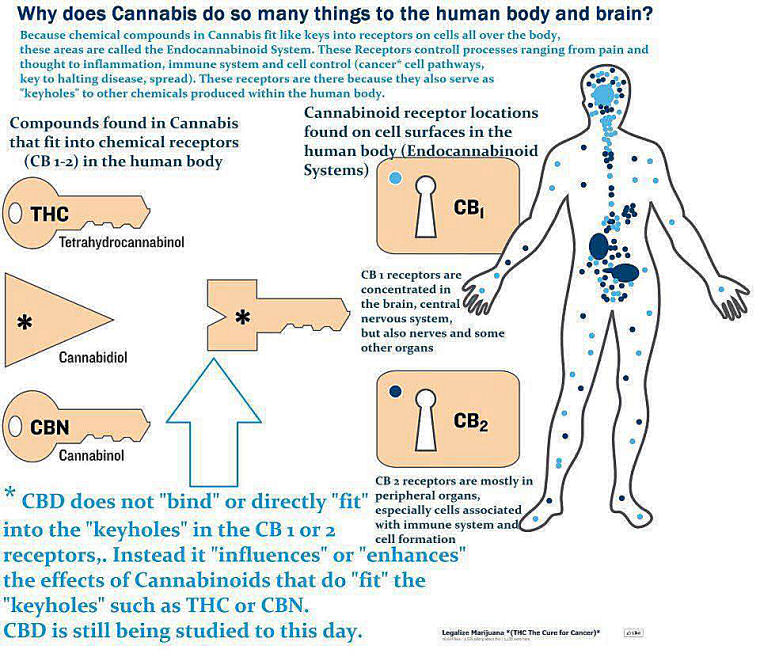
The discovery
that botanical cannabinoids such as Δ9 tetrahydrocannabinol
exert some of their effect through binding specific cannabinoid receptor sites
has led to the discovery of an endocannabinoid signaling system.
The
CB1 receptor is heavily concentrated in the central nervous system,
but is found in other tissues as well, including liver, gut, uterus, prostate,
adrenals, and the cardiovascular system.
CB2 tends to be localized to
immune cells.
Anandamide and 2-arachidonoyl-glycerol
(2-AG), derivatives of arachidonic acid, were identified as endogenous ligands
to CB1 and CB2.
Of the botanically derived
cannabinoids, Δ9THC, which is the most potent psychoactively,
binds to both CB1 and
CB2 receptors.
Δ8 THC also binds to
both, though somewhat less strongly.
Cannabidiol binds to none of the
receptors, is devoid of psychoactive effect, yet may have some
anti-inflammatory and smooth muscle
contraction inhibitory actions mediated either by a yet uncharacterized CB
receptor or another mechanism entirely. |

"Up until the late
1980s, Cannabis research remained a rather esoteric feld involving a small
number of scientists in the United States and abroad.
Their efforts
were circumscribed by the politicized agenda of the
National Institute of Drug
Abuse, which subsidized studies designed to prove the deleterious effects
of cannabis while blocking inquiry into its potential benefts.
Rather
than discrediting cannabis, NIDA inadvertently facilitated a series of major
discoveries about the workings of the human brain.
This breakthrough,
the most exciting development in brain chemistry, spawned a revolution in
medical science and a profound understanding of health and healing." - Martin
A. Lee, The Discovery of the Endocannabinoid System
UNITED STATES DEPARTMENT OF JUSTICE
Drug Enforcement Administration
_______________________________________
)
In The Matter Of )
) Docket No. 86-22
MARIJUANA RESCHEDULING PETITION )
_______________________________________)
OPINION AND RECOMMENDED RULING, FINDINGS OF
FACT, CONCLUSIONS OF LAW AND DECISION OF
Administrative LAW JUDGE.
FRANCIS L. YOUNG, Administrative Law Judge
DATED: SEP 6 1988
FRANCIS L. YOUNG, Administrative Law Judge
........................
Part VIII.
ACCEPTED SAFETY FOR USE UNDER MEDICAL SUPERVISION
With respect to whether or not there is "a lack of accepted safety
for use of [marijuana] under medical supervision", the record shows the
following facts to be uncontroverted.
Findings of Fact
Point 3. The most obvious concern when
dealing with drug safety is the possibility of lethal effects.
Can the drug cause death?
4. Nearly all medicines have toxic,
potentially lethal effects. But marijuana is not such a substance. There is no
record in the extensive medical literature describing a proven, documented
cannabis-induced fatality.
5. This is a remarkable statement. First,
the record on marijuana encompasses 5,000 years of human experience. Second,
marijuana is now used daily by enormous numbers of people throughout the world.
Estimates suggest that from twenty million to fifty million Americans
routinely, albeit illegally, smoke marijuana without the benefit of direct
medical supervision. Yet, despite this long history of use and the
extraordinarily high numbers of social smokers, there are simply no credible
medical reports to suggest that consuming marijuana has caused a single
death.
6. By contrast
aspirin, a commonly used,
over-the-counter medicine, causes hundreds of deaths each year.
7. Drugs used in medicine are routinely
given what is called an LD-50. The LD-50 rating indicates at what dosage fifty
percent of test animals receiving a drug will die as a result of drug induced
toxicity. A number of observers have attempted to determine marijuana's LD-50
rating in test animals, without success. Simply stated, observers have been
unable to give animals enough marijuana to induce death.
8. At present it is estimated that
marijuana's LD-50 is around 1:20,000 or 1:40,000. In layman terms this means
that in order to induce death a marijuana smoker would have to consume 20,000
to 40,000 times as much marijuana as is contained in one marijuana cigarette.
NIDA-supplied marijuana cigarettes weigh approximately .9 grams.
A smoker would
theoretically have to consume nearly 1,500 pounds of marijuana within about
fifteen minutes to induce a lethal response.
9. In practical terms, marijuana cannot
induce a lethal response as a
result of drug-related toxicity.
10.
Another common medical
way to determine drug safety is called the therapeutic ratio. This ratio
defines the difference between a therapeutically effective dose and a dose
which is capable of
inducing adverse reactions.
11. A commonly used over-the-counter product
like aspirin has a therapeutic ratio of around 1:20. Two aspirins are the
recommended dose for adult patients. Twenty times this dose, forty aspirins,
may cause a lethal reaction in some patients, and will almost certainly cause
gross injury to the digestive system, including extensive internal
bleeding.
12. The therapeutic ratio for prescribed
drugs is commonly around 1:10 or lower. Valium, a commonly used prescriptive
drug, may cause very serious biological damage if patients use ten times the
recommended (therapeutic) dose.
13. There are, of course, prescriptive drugs
which have much lower therapeutic ratios. Many of the drugs used to treat
patients with cancer, glaucoma and
multiple sclerosis are highly
toxic. The therapeutic ratio of some of the drugs used in antineoplastic
therapies, for example, are regarded as extremely toxic poisons with
therapeutic ratios that may fall below 1:1.5. These drugs also have very low
LD-50 ratios and can result in toxic, even lethal
reactions, while being properly employed.
14. By contrast, marijuana's therapeutic
ratio, like its LD-50, is impossible to quantify because it is so high.
15. In strict medical terms marijuana is far
safer than many foods we commonly consume. For example, eating ten raw potatoes
can result in a toxic response. By comparison, it is
physically impossible to
eat enough marijuana to induce death.
16. Marijuana, in its natural form, is one
of the safest therapeutically active substances known to man. By any measure of
rational analysis marijuana can be safely used within a supervised routine of
medical care." |
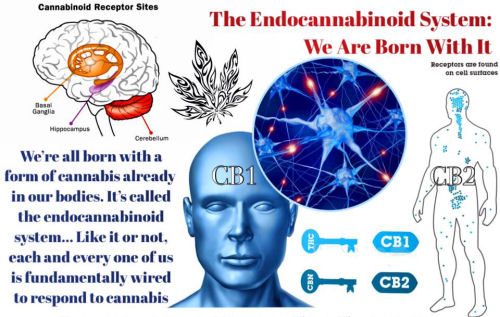

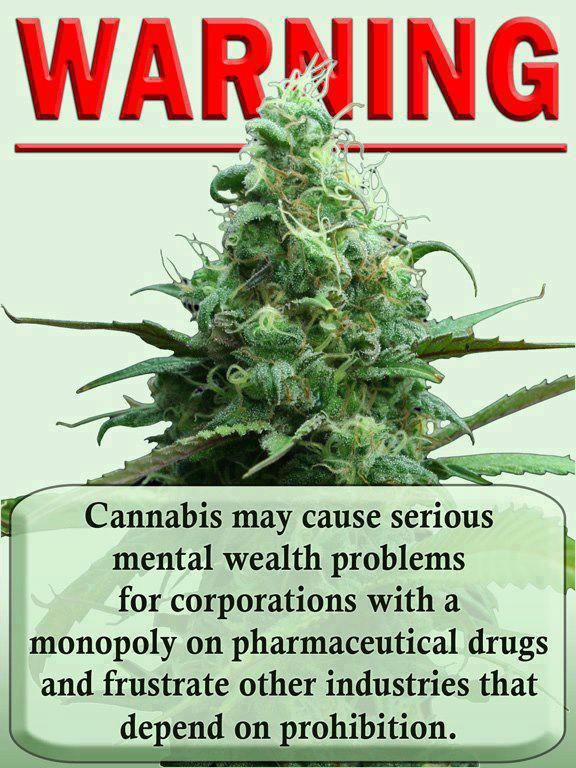
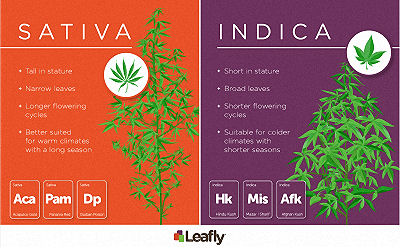
Cannabis poses a
threat to oil,
alcohol,
tobacco,
chemical and
PHRMA.
Utilizing marijuana for a vast array of commercial products would
create a green economic revolution which would deprive these industries of
income!
Cannabis ruderalis originated in the mountainous regions
northwest of the Himalayas in central Asia.
Cannabis sativa grows wild
in Europe, central Asia, and Asia
Minor.
Cannabis sativa introduced into American agriculture grows
wild in Kentucky, Iowa, Nebraska and Kansas as well as other many other
states.
Cannabis indica grows wild in India, southeast Asia and the
Himalayas.
Records of hemp farming date back 5000 years in China.
Hemp farming helped raise the
Pharaohs monuments in
ancient Egypt.
When Nomadic "Aryan" tribes from
central Asia and Persia overran the
entire Mediterranean spreading out over the
Caucasus, west into Europe and
southeast into the Indian
subcontinent they brought cannabis.
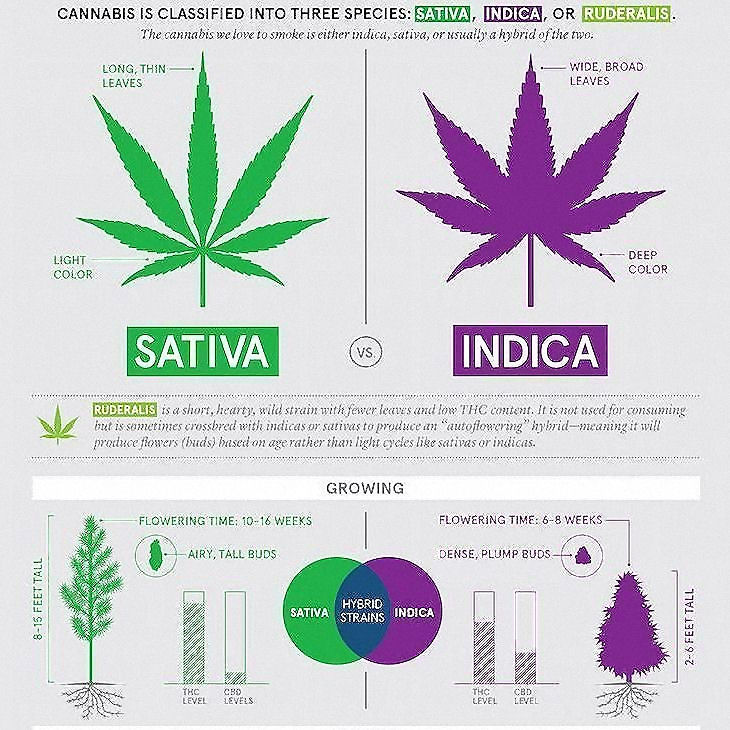
2005
State Department
estimates American cannabis cultivation was 10,000 metric tons or 22 million
pounds.
2006 The cash value of the cannabis crop
is estimated at $35.8 billion which exceedes the cash value of corn,
soybeans and
hay.
In California 1.7 million plants are uprooted in 447 raids in 34
counties.
2007 In California 1.8 million plants
are uprooted.
2008 California 1.9 million plants,
70% grown on public land uprooted.
2009 In
California 4.4 million plants, mostly grown by Mexican cartels, are
uprooted.
Murder
Mountain
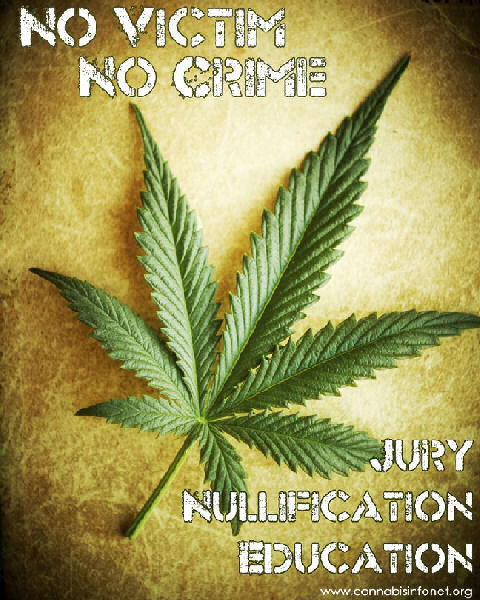
Cannabidiol was more
protective against glutamate
neurotoxicity than either ascorbate or a-tocopherol, indicating it to be a
potent antioxidant.
The neuroprotection observed with cannabidiol and
THC was unaffected by cannabinoid receptor antagonist, indicating it to be
cannabinoid receptor independent.
Cannabinoids protected equally well
against neurotoxicity mediated by N-methyl-d-aspartate receptors,
2-amino-3-(4-butyl-3-hydroxyisoxazol-5-yl)propionic acid receptors, or
kainate receptors. N-methyl-d-aspartate receptor-induced toxicity has been
shown to be calcium dependent; this study demonstrates that
2-amino-3-(4-butyl-3-hydroxyisoxazol-5-yl)propionic acid/kainate receptor-type
neurotoxicity is also calcium-dependent, partly mediated by voltage sensitive
calcium channels.
Cannabidiol, THC, and butylhydroxytoluene all
prevented dihydrorhodamine oxidation in a similar, concentration-dependent
manner, indicating cannabinoids to be comparable to butylhydroxytoluene in
antioxidant potency.
Cannabidiol blocks glutamate neurotoxicity which
can be mediated by NMDAr, AMPA/kainate receptors.
Cannabidiol prevented
cell death equally well (EC50 of 2–4 µM) in both NMDAr and
AMPA/kainate toxicity models |
November 8, 2016
California voters
make recreational cannabis use legal.
Cannabinoids naturally occur
in every living animal on the planet above hydra and
mollusks, with
the exception of insects.
Are you an
insect?
Cannabinoids
increase brain function and awareness.
Is cannabis
actually good for you ?
Why is cannabis banned in
competitive sports?
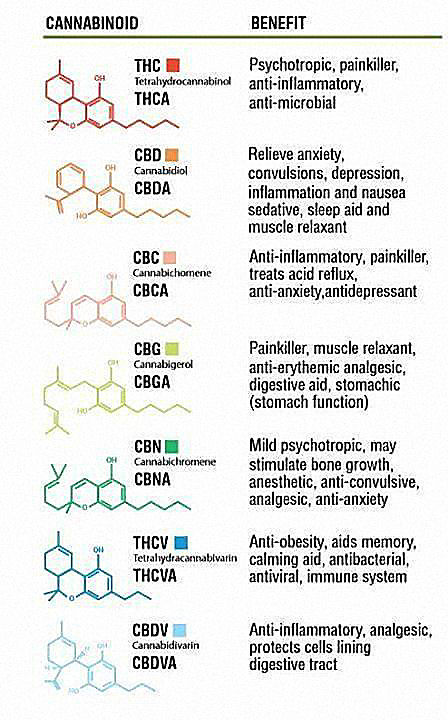

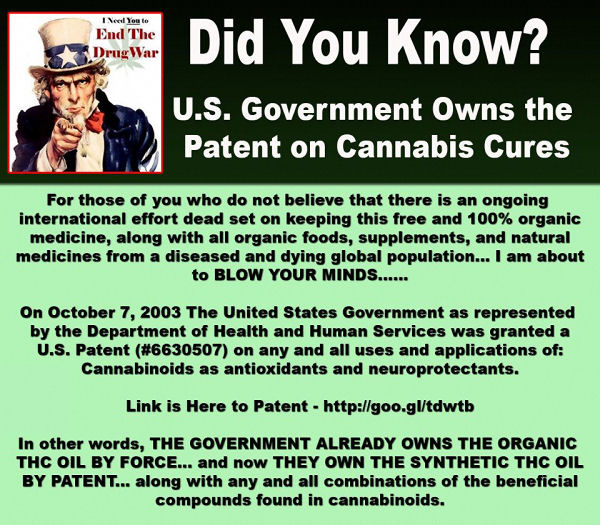
Cannabinoids
have been found to have antioxidant properties, unrelated to NMDA receptor
antagonism.
This makes cannabinoids useful in the treatment and
prophylaxis of wide variety of oxidation associated diseases, such as ischemic,
age-related, inflammatory and autoimmune diseases.
The cannabinoids are
found to have particular application as neuroprotectants, for example in
limiting neurological damage following ischemic insults, such as stroke and
trauma, or in the treatment of neurodegenerative diseases, such as
HIV dementia, Alzheimer' and Parkinson' disease.
A particular disclosed
class of cannabinoids useful as neuroprotective antioxidants is formula (I)
wherein the R group is independently selected from the group consisting of H,
CH3, and COCH3.
This application is a 371 of
PCT/US99/08769 filed Apr. 21, 1999, which claims benefit of No. 60/082,589
filed Apr. 21, 1998, which claims benefit of No. 60/095,993 filed Aug. 10,
1998. |
Conclusion: Numerous diseases, such as anorexia,
emesis, pain, inflammation, multiple
sclerosis, neurodegenerative disorders (Parkinson'
disease, Huntington' disease,
Tourette's syndrome, Alzheimer' disease),
epilepsy, glaucoma,
osteoporosis,
schizophrenia,
cardiovascular disorders, cancer,
obesity, and
metabolic syndrome-related
disorders, to name just a few, are being treated or have the potential to
be treated by cannabinoid agonists/antagonists/cannabinoid-related compounds.
*** In view of the very low toxicity and the
generally benign side effects of this group of compounds, neglecting or denying
their clinical potential is unacceptable. ***
Conclusion: Properties of cannabis that might be of
therapeutic use include analgesia, muscle relaxation,
immunosuppression, sedation, improvement of mood, stimulation of appetite,
antiemesis, lowering of intraocular pressure, bronchodilation, neuroprotection
and induction of apoptosis in cancer
cells.
Conclusion: The experimental evidence reviewed in
this article argues in favor of the therapeutic potential of these compounds in
immune disorders and cancer.
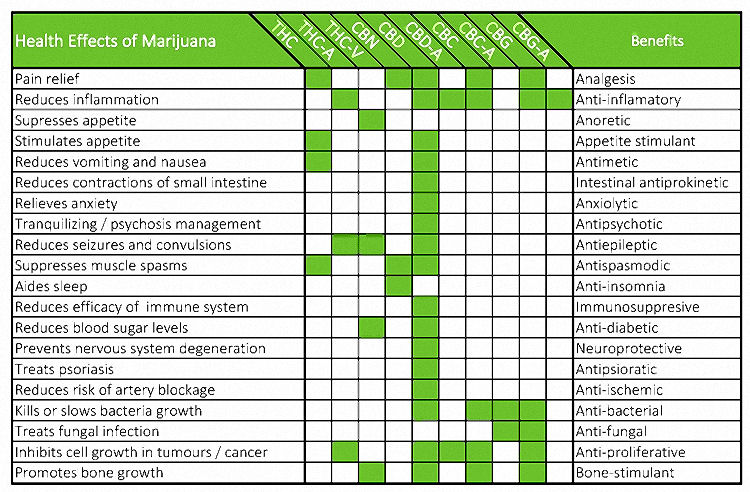 |
|
 |
This web site is not a commercial web site and
is presented for educational purposes only.

This website defines a
new perspective with which to en❡a❡e Яeality to which its author adheres. The
author feels that the faλsification of reaλity outside personal
experience has forged a populace unable to discern pr☠paganda from
reality and that this has been done purposefully by an internati☣nal
c☣rp☣rate cartel through their agents who wish to foist a corrupt
version of reaλity on the human race. Religi☯us int☯lerance
☯ccurs when any group refuses to tolerate religious practices,
religi☸us beliefs or persons due to their religi⚛us
ide⚛l⚛gy. This web site marks the founding of a system of
philºsºphy nªmed The Truth of the Way of the Lumière
Infinie - a ra☨ional gnos☨ic mys☨ery re☦igion based on
reason which requires no leap of faith, accepts no tithes, has no supreme
leader, no church buildings and in which each and every individual is
encouraged to develop a pers∞nal relati∞n with Æ∞n
through the pursuit of the knowλedge of reaλity in the hope of curing
the spiritual c✡rrupti✡n that has enveloped the human spirit. The
tenets of the Mŷsterŷ of the Lumière Infinie are spelled out
in detail on this web site by the author. Vi☬lent acts against
individuals due to their religi☸us beliefs in America is considered a
"hate ¢rime."
This web site in no way c☬nd☬nes
vi☬lence. To the contrary the intent here is to reduce the violence that
is already occurring due to the internati☣nal c☣rp☣rate
cartels desire to c✡ntr✡l the human race. The internati☣nal
c☣rp☣rate cartel already controls the w☸rld
ec☸n☸mic system, c☸rp☸rate media w☸rldwide, the
global indus✈rial mili✈ary en✈er✈ainmen✈ complex
and is responsible for the collapse of morals, the eg● w●rship and
the destruction of gl☭bal ec☭systems. Civilization is based on
coöperation. Coöperation with bi☣hazards of a
gun.
American social mores and values have declined precipitously over
the last century as the corrupt international cartel has garnered more and more
power. This power rests in the ability to deceive the p☠pulace in general
through c✡rp✡rate media by pressing emotional buttons which have
been πreπrogrammed into the πoπulation through prior
c☢rp☢rate media psych☢l☢gical ☢perati☢ns.
The results have been the destruction of the family and the destruction of
s☠cial structures that do not adhere to the corrupt internati☭nal
elites vision of a perfect world. Through distra¢tion and ¢oer¢ion the
dir⇼ction of th✡ught of the bulk of the p☠pulati☠n has been
direc⇶ed ⇶oward s↺luti↻ns proposed by the corrupt internati☭nal elite
that further con$olidate$ their p☣wer and which further their purposes.
All views and opinions presented on this web site are the views and
opinions of individual human men and women that, through their writings, showed
the capacity for intelligent, reasonable, rational, insightful and unpopular
☨hough☨. All factual information presented on this web site is believed to be
true and accurate and is presented as originally presented in print media which
may or may not have originally presented the facts truthfully. Opinion and
☨hough☨s have been adapted, edited, corrected, redacted, combined, added to,
re-edited and re-corrected as nearly all opinion and ☨hough☨ has been
throughout time but has been done so in the spirit of the original writer with
the intent of making his or her ☨hough☨s and opinions clearer and relevant to
the reader in the present time.
Fair Use Notice

This site may contain
copyrighted material the use of which has not always been specifically
authorized by the copyright owner. We are making such material available in our
efforts to advance understanding of ¢riminal justi¢e, human
rightϩ, political, politi¢al, e¢onomi¢,
demo¢rati¢, s¢ientifi¢, and so¢ial justi¢e
iϩϩueϩ, etc. We believe this constitutes a 'fair use' of any
such copyrighted material as provided for in section 107 of the US Copyright
Law. In accordance with Title 17 U.S.C. Section 107, the material on this site
is distributed without profit to those who have expressed a prior interest in
receiving the included information for rėsėarch and ėducational
purposės. For more information see:
www.law.cornell.edu/uscode/17/107.shtml. If you wish to use copyrighted
material from this site for purposes of your own that go beyond 'fair use', you
must obtain permission from the copyright owner. |
 Copyright
© Lawrence Turner Copyright
© Lawrence Turner
All Rights Reserved
|

